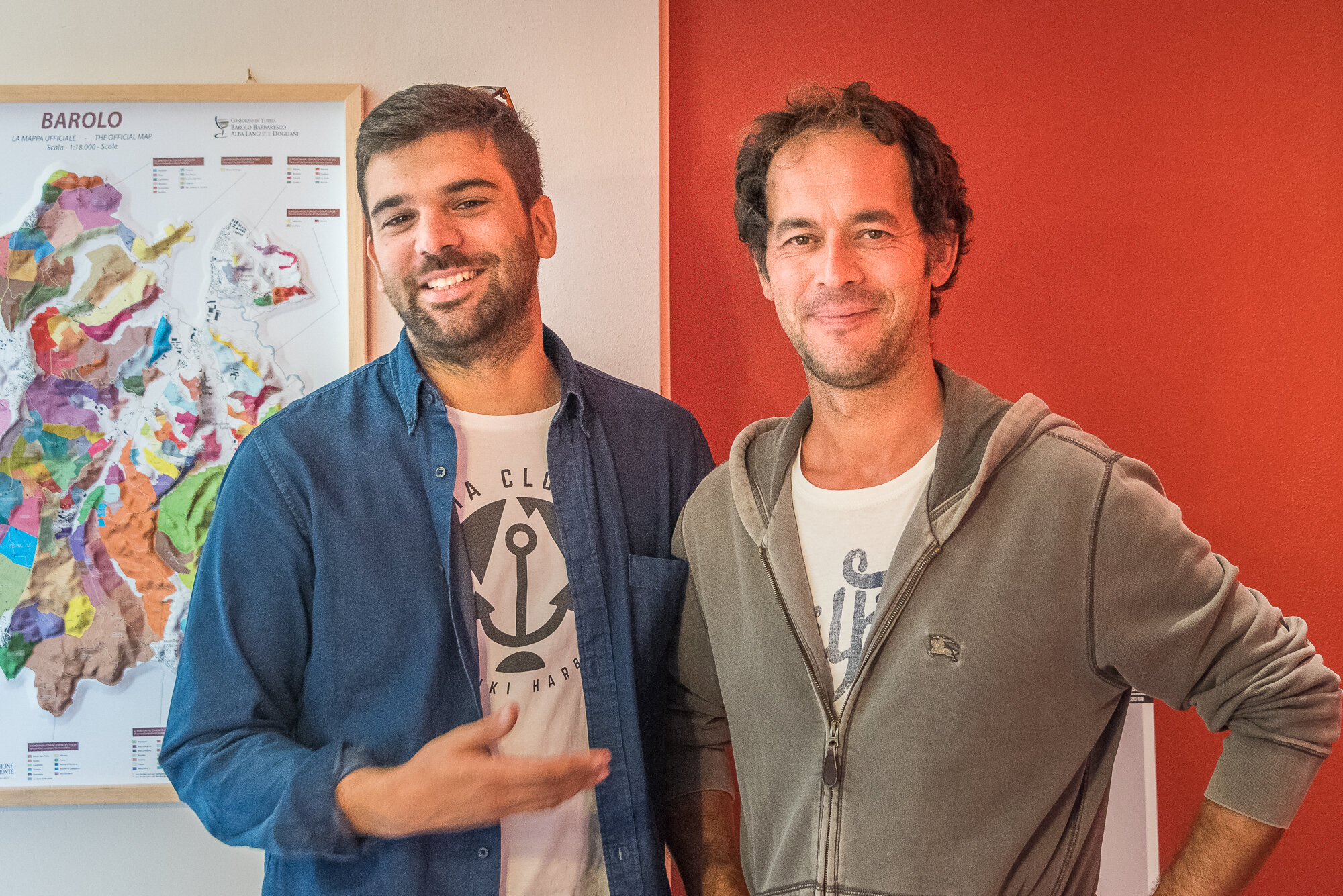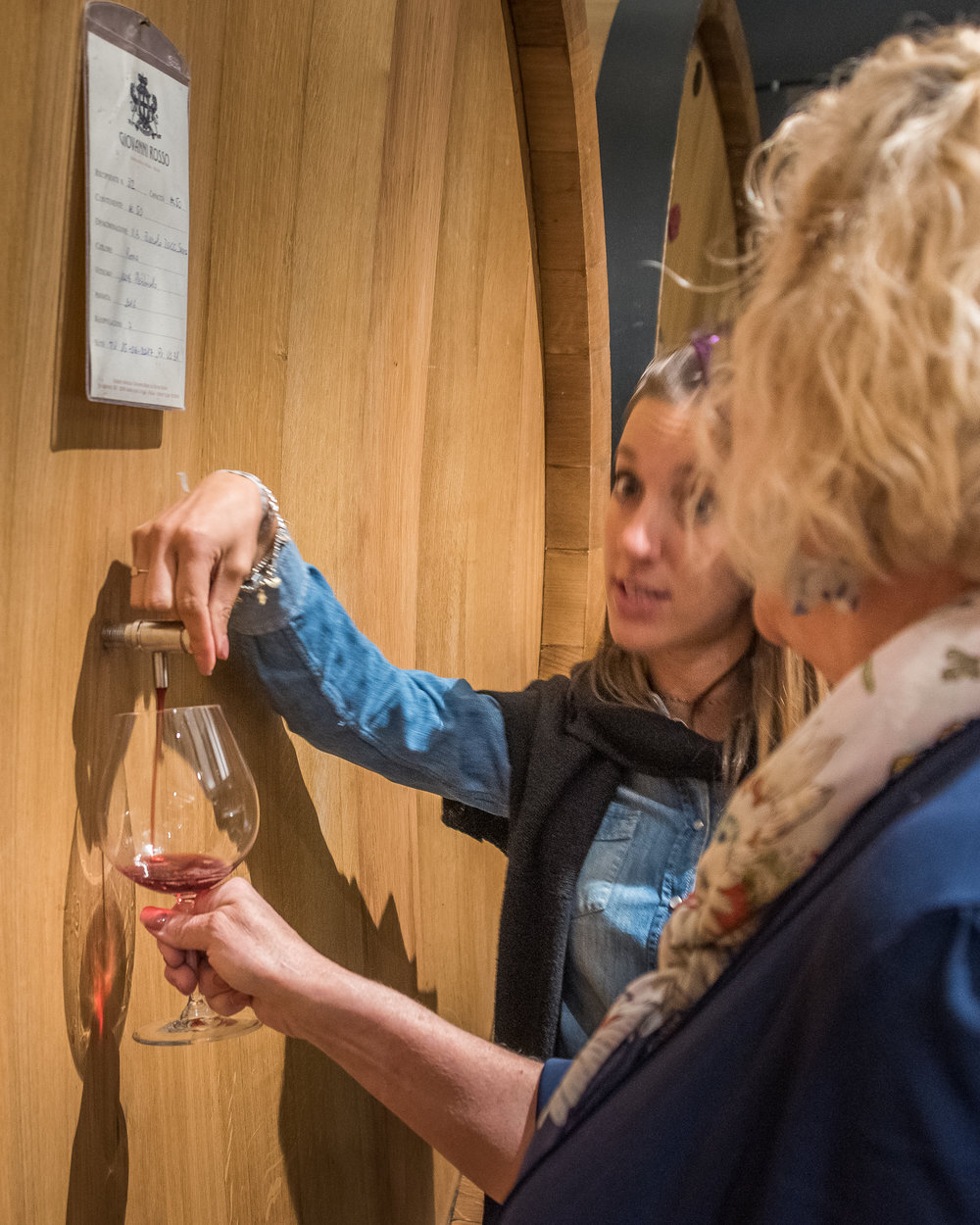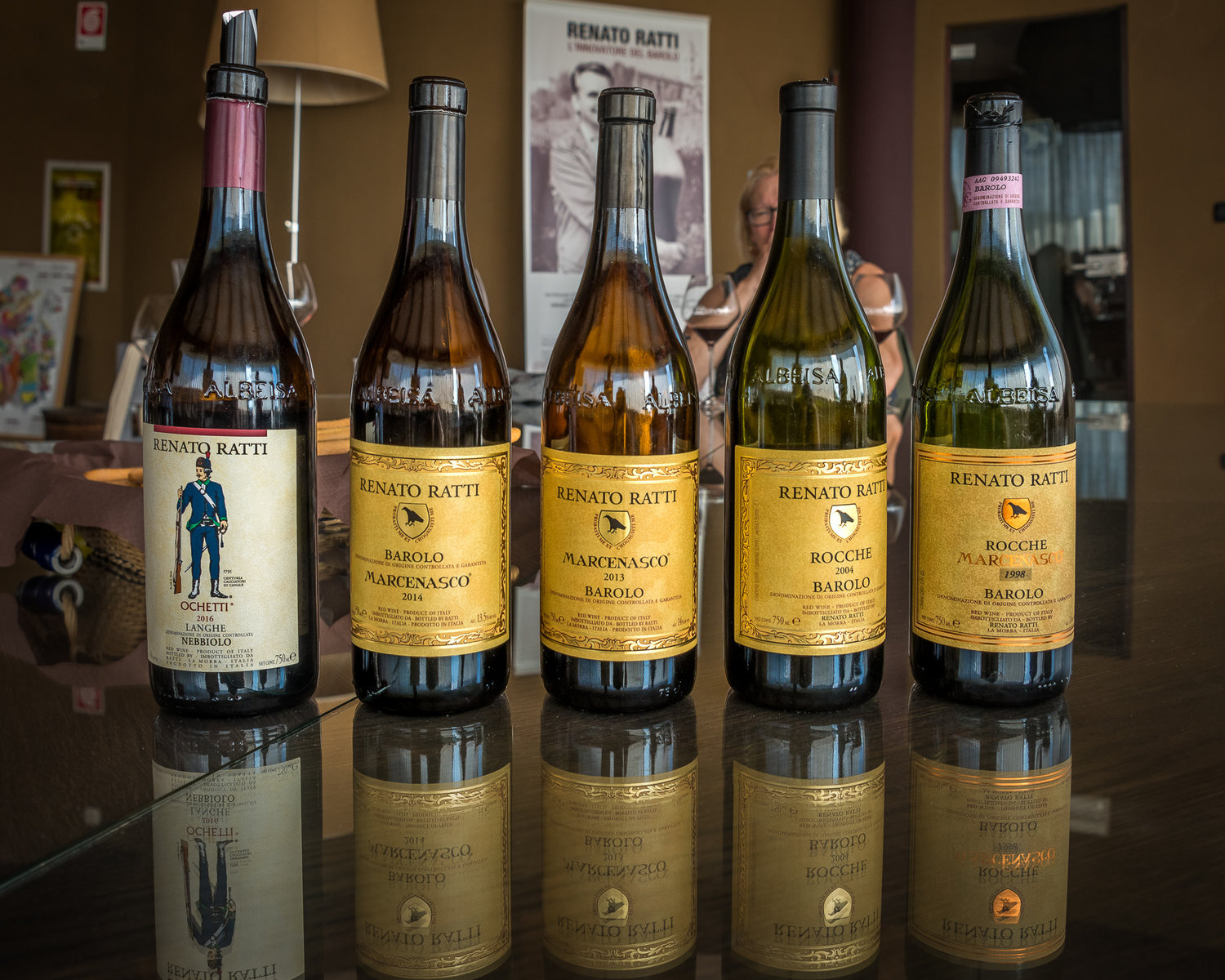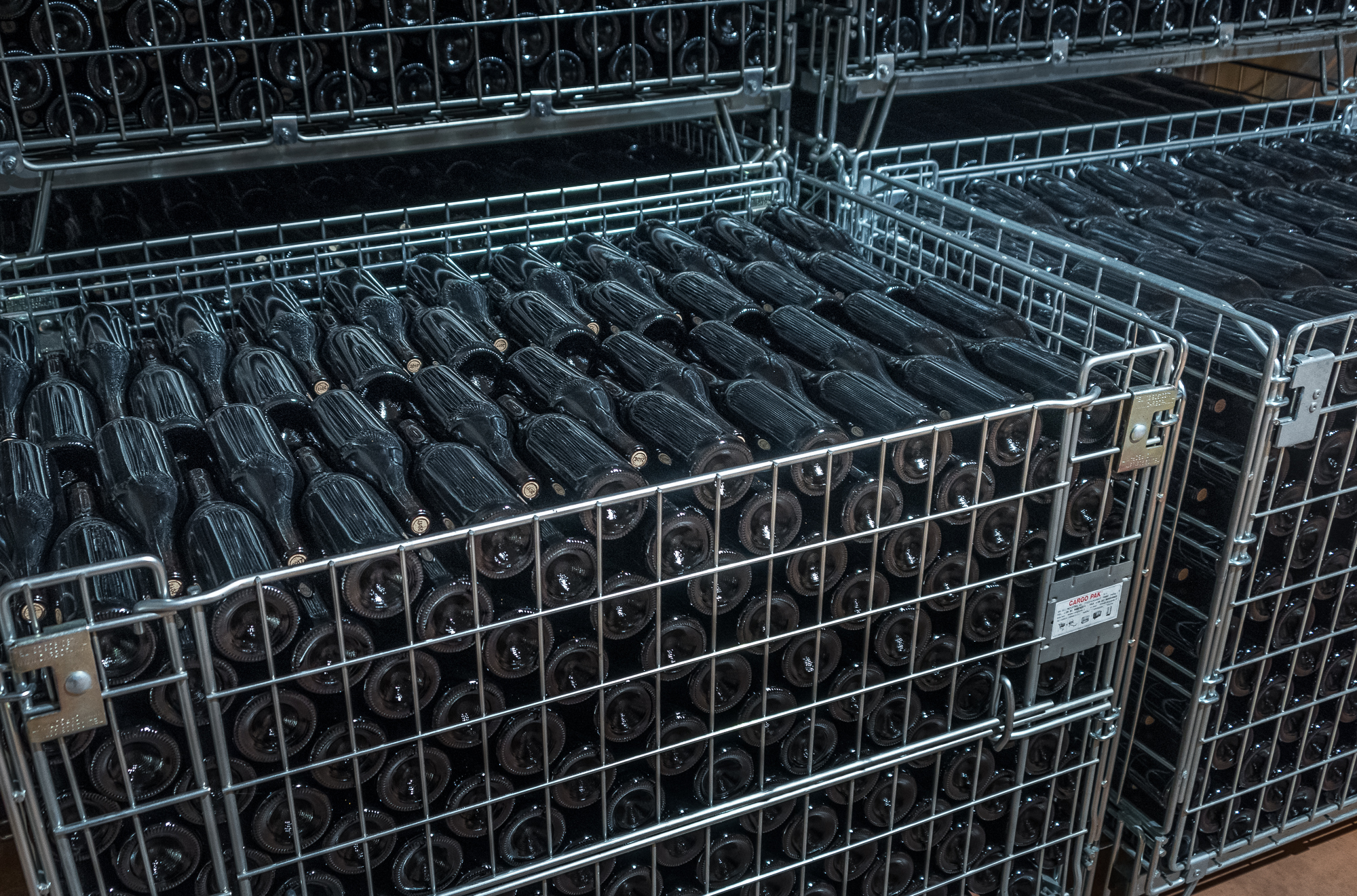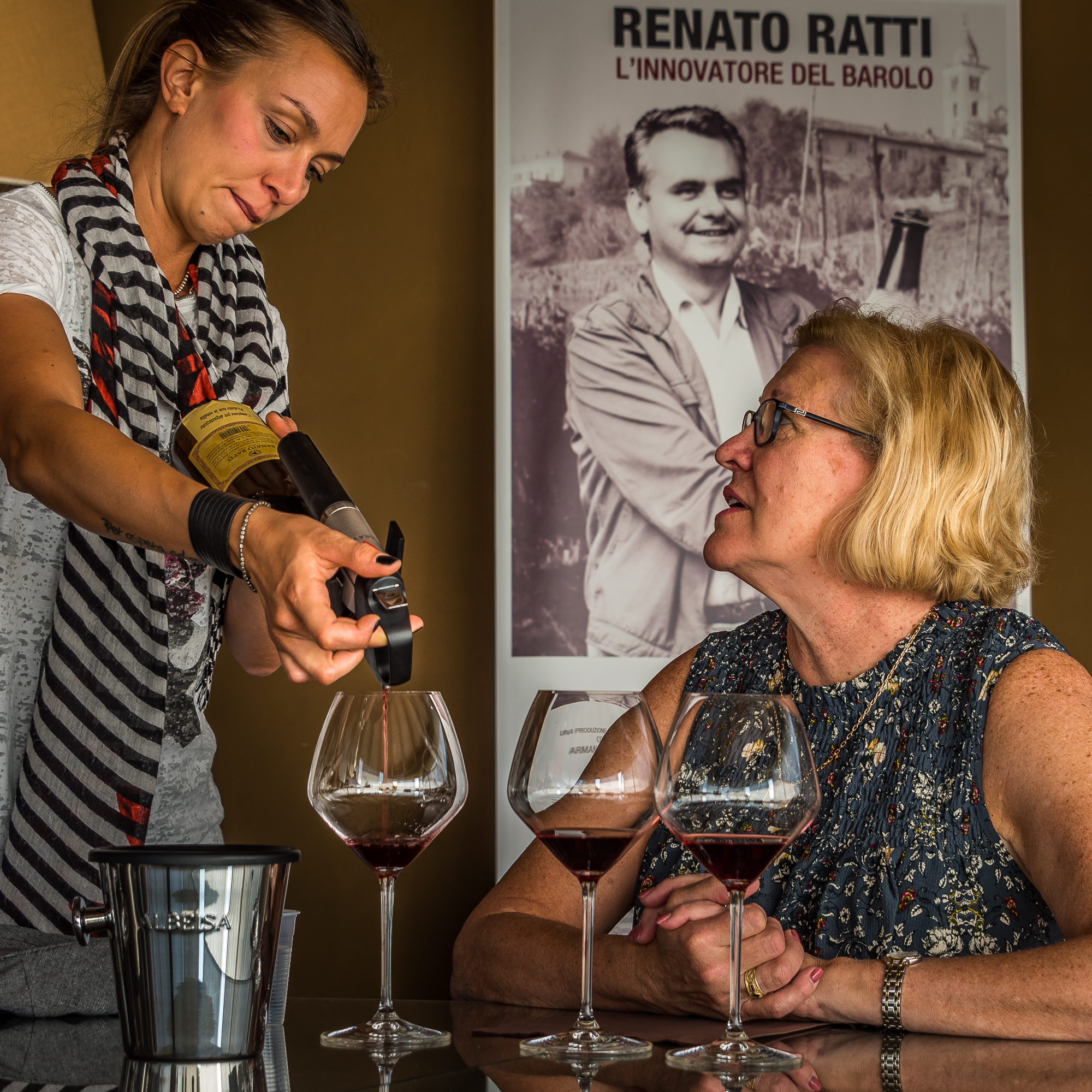I’ve started a new category for my blog articles. It’s about wine and it’s about time, right?!
Yep, it’s the category that captures all of the blog articles that I’ve created over the years that are concerned with Italian wines. I count 8 articles in that category.
If you click on the heading to the top right of this article titled ‘Index of Articles’, you will be taken to the ‘Index of Articles’ page…strange how that works, huh? If you scroll down a bit in the right-hand column of said index, you will find the new ‘Italian Wines’ category near the top…right where it ought to be.
To simplify things for today, I’ve summarized those 8 articles just below.
So, grab a bottle of your favorite Italian wine, open it, pour yourself a glass (if you need permission, you’ve got a standing approval from me), and read on. I list the articles beginning with the oldest, along with just a hint of what you find in the complete article.
Castello Brolio
08/25/2015
Castello Brolio of Chianti Fame
This article titled, “Beautiful Places Castello Brolio”, was written because of the importance of Castello Brolio to Tuscan wines. You’ve most likely enjoyed Chianti and Chianti Classico wines in the past…right? Well, they started right here at Castello Brolio. It was the castle’s owner, Baron Ricosoli, who created the formula for Chianti. After more than thirty years of research and experiments, he divulged his formula for Chianti in a letter in 1872.
As a reminder, the word “Classico” in Chianti Classico is not necessarily a designation of the quality of a wine, but is related to its geographic origin. It is a designation for wines grown in a certain place within the official Chianti region…it’s like the hole (Chianti Classico) in a donut (the overall Chianti region)…kind of. On the other hand, if you find the words “Riserva” after the words Chianti or Chianti Classico, you can assume that the extra aging has improved the taste of the wine.
Banfi Wines
05/24/2016
Castello Banfi sits proud south of Montalcio
Most of you know of my love for all things Banfi…be it the food, the castello, the borgo, the people, or the wine…they are all magnificent! In the article titled, “Stay Here, Eat Here, Drink Here: Banfi” you will get the full extent of what Banfi has to offer.
In the mid ‘70s, with earnings from their very successful importation of Riunite wines (remember, ‘Riunite on ice, that’s nice!’ commercials?), Brothers John and Harry Mariani went to Italy in search of the perfect place to start their own winery business…a business which has become an empire in the wine world.
A wine tasting is the best way to decide on your wine purchase
The prominent grape of the estate is Sangiovese, the same grape (among others) that is made into Chianti wine. But here, the wine of fame is Banfi’s Brunello. And then, Brunello isn’t the only wine made by the Mariani family, and you will find a good many of them available in the enoteca of the castello…like these that we tasted whilst there.
Sitting poolside at Il Borgo Banfi
I don’t use the word ‘castello’ (i.e. castle) lightly. Yes, the estate is centered around a castello sitting atop a scenic hilltop, as seen in the painting, above. And within that castello, you will find Il Borgo Banfi (the hotel). I can’t recommend a stay at this lovely, peaceful place enough. We have such great memories of our time there. And, who wouldn’t appreciate just a wee bit of time away from wine tasting, sitting poolside in the Tuscan countryside? We certainly did…and to prove it, I’m sure you recognize Ellen’s toes in this photo.
Enjoying Your Italy-Bought Wine
02/02/2017
Just a part of our day of Italian wine
This article isn’t about a specific winery or wine type, though one does play heavily into the article. It is about spending a day being just a bit naughty, not doing anything other than relaxing and enjoying a bottle of wine that you purchased during one of your trips to Italy.
In this article titled, “Enjoying Your Italy-Bought Wine”, before we get to the wine that we sipped before a fire on a cold, winter day, you get the back story in the purchase of the wine.
There is the story of lunch at a fabulous restaurant in Radda in Chianti.
Then there’s the post-lunch drive on a Google-assured road that wasn’t much of a road after all.
And finally, we arrive for a wine tasting that turned to wine buying.
Ahhh, it was such a great day of enjoyment…both the day in Italy, and then the day at home, lounging away the day in our jammies. Give it a try…you’ll like it.
In addition to some of our favorite memories, this day’s activities led me to taking probably my favorite of all Italy photos, shown just below. The Tuscan countryside, just after an afternoon shower. Magnifico!
My favorite photo taken in Italy
By the way, that same day in Italy led to these articles, also: Get Lost!, and Wild-Goose Chase. I hope you enjoy these two articles, too…it was a fun, frustrating, and then an interesting day.
Taking a Guided Winery Tour
09/03/2019
OK, first of all, who wouldn’t want to take a guided winery tour with Matteo? Right, ladies?
Beyond that, I can assure both male and female alike that getting around to the wineries of an area of Italy with a local, knowledgeable guide, is the way to go.
Our wine-travelling day with Matteo was spent in the Langhe area of Piemonte, in the heart of the Barolo wine area. If you plan to do a bit of wine tasting in Italy, you will find guides like Matteo (well, maybe not exactly like Matteo) throughout the Italian wine area.
Our first stop of the day was at the Aurelio Settimo winery. Here, Laura showed us both the traditional oak casks, as well as our first sighting of a glass-lined, concrete casks. Usage depends on the wine you are making, and the flavor you want to impart in that wine.
Next up was the DaMilano winery. Well, we didn’t actually tour the winery, but we spent a good bit of time, and money, at the DaMilano enoteca, where Alicia helped us sip and purchase. And, we were very pleased to find that DaMilano also produces the white wine called Arneis, which we had fallen in love with in the town of Nieve.
Next up was the Schiavenza winery. Here, Matteo’s buddy Waldo produces great wine in small quantiles. And, what’s Leslie measuring in the photo? Waldo had just told us how the casks were cleaned after being emptied. He says that he climbs through that little arched opening and brushes and hoses out the casks…and he wasn’t kidding.
And finally, we ended our day at the Giovanni Rosso winery. Here we had another new experience in wine tasting. Not only did we taste wine from the Giovanni Rosso bottles in their tasting room, but Francesca also tapped right into one of the wine casks for our tasting enjoyment…enjoyment you can see here on the faces of Matteo and Craig.
I neglected to tell you that we had a mid-day lunch at Trattoria Schiavenza. Sitting on the terrazza, we spent a bit of time with watercolors, painting the beautiful Piemonte-Langhe countryside.
Going to Italy? Going to taste a bit of wine? Check out Taking a Guided Winery Tour.
Renato Ratti Winery
09/17/2019
If you want to visit a winery that is state of the art…both in design and in presentation, then you definitely need to visit the Renato Ratti Winery.
Your entrance to the green-roofed Renato Ratti winery
First of all, the winery has been placed carefully into a hillside below the town of La Mora, where an environmentally-friendly green roof and gravity-fed winery have been expertly accomplished.
Next, you will find one of the most creative of winery introductions in a video developed by Pietro Ratti that is both fun and informative.
Christine takes us deep in the cellars of Renato Ratti winery
Then, take the tour of the wine making facility below you, deep down in the hillside.
Next, let Christine lead you through a series of vintage Barolo wines, where you can stick your nose in a glass and taste great wines. This way, you get to see how the ‘nose’, tannins, taste, and color change over time as a wine ages in-bottle. By the way, it changes in a good way! At least for Barolo wines.
And, note the view from the tasting room…probably the most magnificent in all of Italy as it frames the vines of the Nebbiolo grapes.
Finally, snap a photo with your hostess Christine, and engaging owner, Pietro Ratti.
Allegrini Winery
01/07/2020
Allegrini’s Villa della Torre
It’s time to learn about appassimento! And where better than at the Allegrini Winery? That’s a rhetorical question, by the way, as there is no better answer than at Allegrini.
The Villa della Allegrini sits just north of Verona, in the heart of the Valpolicella area…known for both Valpolicella and Amarone wines. And, then there’s their own Palazzo della Torre wine.
Palazzo della Torre is made using the appassimento process. Appassimento means ‘withering’, and that’s what happens to some of the grapes as they are raisinated, or dried for about 3 months.
Here you can see Olmo as he describes the crappy (sorry, pardon the language) soil in which Allegrini’s grapes are grown. Mineral, rather than organics desired by most farmers, are the key to a healthy wine-making grape.
Wondering what a grape looks like during the appassimento process? Check out this photo.
Amarone wine is also made with the appassimento process. And, unlike the marvelous Brunello of Tuscany, which uses just the one Sangiovese grape, the production of Allegrini’s famous Amarone wine uses a blend of four different grapes.
Finally, I’ll leave you with a view of what I would call, ‘The King of the North’…a bottle of Amarone, lying comfortably upon a pillow of withering grapes, ready for you to gently lift it up and then savor it.
Michele Chiarlo Winery
01/21/2020
Our last winery visit will be to the Michele Chiarlo winery. Here, not only did we visit the winery, but also the vineyards.
We started at the La Court vineyard pictured above in the eastern portion of Piemonte. Beautiful, isn’t it?
We met Alberto at the vineyards, where he explains the layout of the vineyard, and the importance of south- vs north-facing vines, and the compass points in between.
Then, it was on to the winery and tasting room. Leslie listens closely to find out more about their Arneis white wine. And seeing the bottling room was fascinating.
DOCG, DOC, IGT & DOG
11/17/2020
The most recent article concerning Italian wines dealt with government-issued geographic and quality guarantees.
The importance of these designations is one of quality control…Italy doesn’t want inferior wines being produced that would lower the already very-high bar of Italian wines. Thus, the governments involvement in the wines produced in Italy.
As this was recently published in November, I will assume that you read DOCG, DOC, IGT & DOG in the very serious state of mind in which government decrees should be carefully examined…so I won’t dwell on it here.
That’s it for today. Is that bottle empty, yet? No? Then get back to work on it! Meanwhile, I’ll cover the multitude of wine-producing grapes of Italy soon.
In closing, here is a toast of San Angelo Pinot Grigio from Banfi. This toast is to your continued health in 2021, and to your successful exit from 2020. Until next time…





